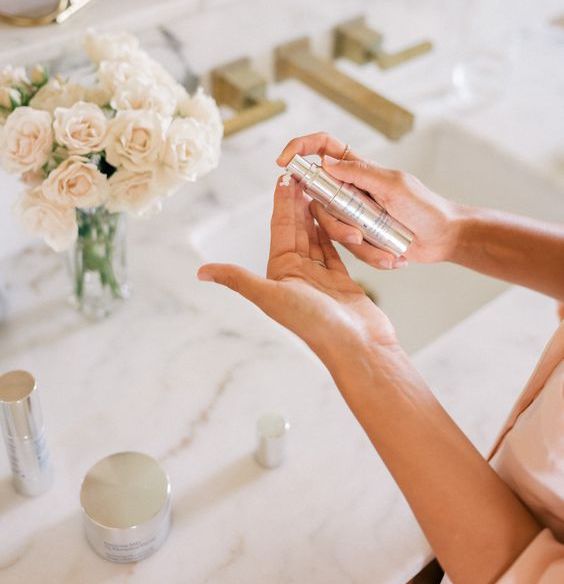Mixing retinol and acids together is one of the most confusing things in skincare! If used incorrectly, these powerful skin care products can cause serious chemical burns, so you should definitely avoid applying these ingredients at the same time. Read on to learn how you can use retinol and aha/bha together in a skincare routine.
What are AHA and BHA?
The Alpha Hydroxy Acids (AHA, for example, Glycolic acid and lactic acid) and Beta Hydroxy Acid (BHA/Salicylic acid) act by dissolving the bonds holding dull and dead skin on the surface. They speed up cell turnover and stimulates cell renewal. That’s what’s happening on the cellular level. But what you’ll see is a brighter complexion, as well as smoother and softer skin.
Both of these acids work in the same way – helps to brighten the complexion, softens fine lines and dark spots. While they both work on the skin’s surface, the main difference is that AHAs are water soluble (suitable for Normal to dry/sun damaged skin) and BHA/salicylic acid is oil-soluble (suitable for normal to oily/acne prone skin)
What is Retinol?
Retinol is a type of retinoid, which is made from vitamin A. It is considered the gold standard for its anti-aging and skin clearing benefits. One common misconception we must clarify is that Retinol is NOT an exfoliator. It works fundamentally different by ‘telling’ skin cells to develop normally. It does not loosen the bond between skin cells.
How to use retinol and AHA/BHA together?
To make Retinol and Acids both work together, Apply them at different times of the day or on alternate days. For example, one day Acid(s) and the other day Retinol.
Pro Tip: If your T-zone is oily but the rest of the skin is comparatively dry, Try applying a pea-sized amount of BHA exfoliant to the oily areas and an AHA exfoliant to the dry areas and then apply the same amount of Retinol over it. A little goes a long way!
If you have sensitive skin, always start with a gentle moisturizer first to add a layer of hydration to buffer minor irritation.
NOTE:
» Go with the lower concentration (0.01%) of Retinol first, and then gradually increase amount after some time. Start low and start slow.
» Don’t forget your neck and chest! AHA and BHA exfoliants can exert their skin-renewing, texture-improving benefits there, too!
» If any irritation persists after adding vitamin A (Retinol) to your skincare regimen, know that it’s all “part of the process” and your skin will eventually begin to tolerate the ingredient once it is accustomed, usually takes 2 weeks. If it doesn’t go away after a short period of time, or if you have swelling or a rash, wash it off right away, and call your physician for advice.
» When you start using Retinol or AHAs/BHA, you must be committed to protecting your skin from the sun, and not just on days you’re actively applying your product.
» If you’re under a dermatologist’s care or are using any prescription skin care medication, you should check with them before using any peel treatment. It may not be appropriate for your skin.
You may also like
» Why Retinol Deserves a Spot in Your Skincare Routine
» AHA vs BHA: A Beginner’s Guide To Chemical Exfoliation
For more on fashion & beauty, follow Major Mag on Instagram and Pinterest.
